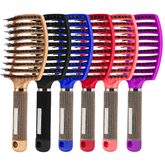Study: Hair Greying May Protect Against Melanoma

A recent study has proposed a surprising connection between hair greying and reduced melanoma risk. Researchers observed that environmental stressors appear to direct pigment stem cells down different paths—either into the pigment-loss process we recognise as greying, or into pathways that can lead to melanoma. While the findings are early and require further clinical validation, they offer a fresh perspective on how ageing and cellular stress may influence skin cancer biology.
What the study found
The research, reported in a medical review, suggests a mechanistic trade-off in pigment stem cells. Under environmental stress, these cells may be diverted toward processes that cause hair to lose colour; alternatively, a different cellular response could increase melanoma risk. Key takeaways from the report include:
- The behaviour of pigment stem cells is influenced by external stressors.
- Greyer hair may reflect a shift in cell fate away from malignant transformation.
- The relationship between ageing, pigment biology and cancer is complex — greying is not a guarantee of protection.
How pigment biology links hair and skin
Hair colour is determined by specialised pigment cells that supply melanin to growing hair follicles. Over time, these pigment-producing stem cells can become depleted or change function, resulting in greying. The study highlights that environmental pressures — including DNA-damaging agents, ultraviolet (UV) radiation and other cellular stressors — can influence whether pigment stem cells follow a path that leads to loss of pigment or, in some cases, malignant change.
It is important to stress that the research describes a possible biological mechanism rather than a clinical rule. Greying remains a normal sign of ageing; while the study raises the prospect of a protective association, it does not establish greying as a reliable shield against melanoma.
Implications for scalp and skin health
For readers who care about hair and skin, the study prompts several practical considerations. If pigment stem-cell dynamics influence both greying and cancer risk, then monitoring skin and scalp health becomes even more relevant. Dermatologists and researchers are likely to explore whether biomarkers in hair or scalp tissue could help predict melanoma risk or guide preventive strategies.
Until such tools exist, sensible protective measures remain the best course of action. The study is a reminder that ageing and environmental exposure both shape long-term hair and skin outcomes.
- Sun protection is still essential: use sunscreen on exposed skin, wear wide-brimmed hats and seek shade during peak UV hours.
- Perform regular skin checks: familiarise yourself with your moles and notes any changes in size, shape, colour or texture.
- Report scalp changes: unusual lumps, scaly patches or persistent sores on the scalp should be examined by a clinician.
- Manage lifestyle risks: smoking and excessive sun exposure raise overall skin-cancer risk and negatively affect hair health.
What this means for future research and treatments
The study opens avenues for scientific inquiry rather than immediate clinical shifts. Possible research directions include:
- Investigating molecular signals that direct pigment stem-cell fate.
- Exploring whether markers of greying can inform personalised skin-cancer screening.
- Developing interventions that protect pigment stem cells from harmful stress without increasing malignancy risk.
Takeaway
The new study suggests that hair greying and melanoma may be linked through the way environmental stress affects pigment stem cells. While intriguing, the findings are preliminary: greying should not be taken as a sign of protection from melanoma. Readers should continue established skin-health practices — sun protection, regular skin checks and prompt medical review of suspicious lesions — while scientists explore whether pigment biology could one day inform cancer prevention or diagnostic strategies.
Explore More: Discover related reads from Hairporium — News • Guides • DIYs • Expert Articles.
More From the Experts: Read interviews and insights from stylists and professionals on Hairporium Expert Articles.







